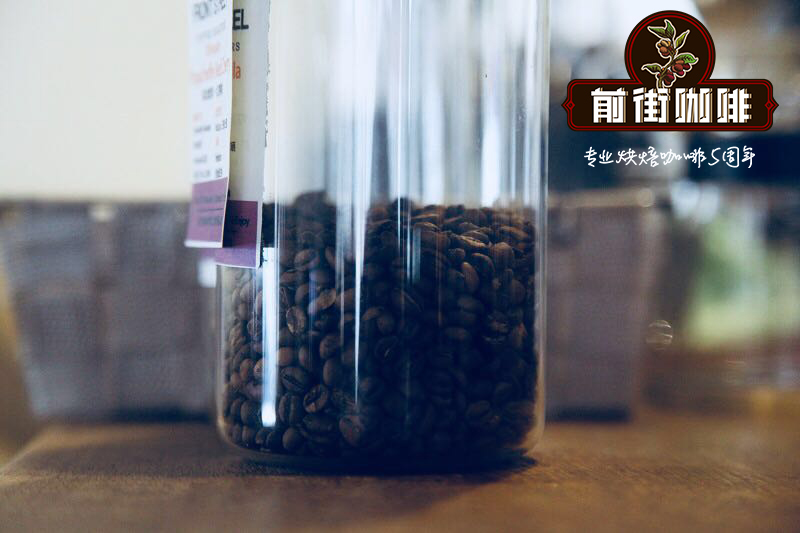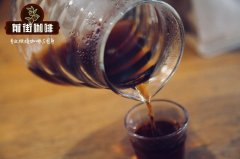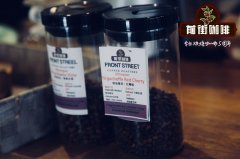Know the charm of a single item coffee where a single item coffee how to adjust the taste of a single item coffee roasting

Professional coffee knowledge exchange more coffee bean information please follow the coffee workshop (Wechat official account cafe_style)
Popular science | knowledge of coffee varieties, introduction of the types and tastes of individual coffee, price of single bean
Some people refreshed themselves with coffee, others sipped and tasted it. It is sometimes bitter and sometimes sweet; it is like the dawn, changing every minute.
Coffee is changing, and times are changing. Today, you must also find in the streets that the domestic coffee culture has changed, chain stores gradually can no longer meet the needs of coffee lovers, coffee and coffee people's "personality" began to replace the standard operating procedures, obviously now rapidly into the "third wave of coffee", the protagonist of this wave is "boutique coffee" (specialty coffee).
The so-called boutique coffee, in vernacular, refers to "high-quality coffee", specifically "coffee with a score of more than 80 points measured by coffee appraisers." The appraiser's score is based on the details of coffee's brightness, sweetness, acidity, balance, flavor, aftertaste, and so on, which require a particularly sensitive sense of taste and smell to be carefully distinguished. and this is a skill that fine coffee users must continue to learn.
Compared with "boutique coffee", you may hear "Single Origin" more often. The Chinese translation of this word does not feel quite right, as if you can't read its meaning, but as long as you can get a general idea of what a single product is from English; it refers to a batch of coffee beans produced from a single farm, so a mixture of coffee beans produced by different farms cannot be called a single product. In other words, the production information of a single coffee must be read on the packaging, including the producing country, region, manor (which may also be a cooperative or processing farm), coffee variety, grading, and handling methods. You can imagine that like red wine or tea, production area, vintage and production technology all have an impact on the flavor.
Coffee producing countries are basically concentrated in East Africa, Central and South America, and Southeast Asia. Yirgacheffe in Sidamo, Ethiopia is the most famous in East Africa, and other East African countries such as Kenya, Tanzania, Uganda and Rwanda also have coffee beans to choose from. Perhaps the most famous in Central and South America is the Huehuetenango in the Antigua region of Guatemala, in which the Flower God Cooperative (Flora) is particularly well known. In addition, Blue Mountains, Colombia and Brazil in Jamaica are also familiar coffee producers, while Panama is recently famous for its jade manor "geisha" in the Boqui specialty region (Boquete). As for the choice of coffee in Southeast Asia is not as rich as East Africa and Central and South America, we most often hear of Java coffee in Indonesia and the unique "Sumatra Mandheling" of Sumatra.
Each of these producing areas has its own characteristics. East Africa has bright fruit aromas, Central America is balanced and clear, and Southeast Asia is relatively low. Coffee expert Viktor Dobai said that the third wave of coffee drives the story behind coffee, and you will know the overall origin of the cup of coffee in hand, including the variety, the place where you grow, the process, and even which village the coffee farmer is from. Now drinking coffee is no longer concerned about how much milk and sugar is added, but about the production information of coffee and whether its regional taste is in line with your preferences.
After understanding the overall origin of coffee, the focus is on the roasting of coffee. Coffee raw beans must cooperate with roasting in order to give full play to the flavor of coffee, if roasting is not good, firepower is too strong, no matter how good the flavor of coffee beans may become rigid, or even bad, so roasting must be an important key to the success or failure of coffee. Baked beans is an esoteric knowledge, most people may have to avoid the baked bean curve (roast profile curve), not to mention the baked bean curve is only an auxiliary, the baker's observation and reaction is the real time. Behind a good cup of coffee, there must be an experienced bean baker. If you can chat with the bean baker while tasting the coffee, you must know more about the cup of coffee in your hand.
I have been in contact with individual coffee for some years, and I can always find their dedication, professionalism and enthusiasm for coffee in the bean baker. They may have their own preferences for coffee, and sometimes they inevitably have different opinions, but it is conceivable that they are all waiting for their bosom friend to have a cup with them.
What is soe coffee? The concept of single Coffee Single Origin and the recommendation of Coffee baking degree
Important Notice :
前街咖啡 FrontStreet Coffee has moved to new addredd:
FrontStreet Coffee Address: 315,Donghua East Road,GuangZhou
Tel:020 38364473
- Prev

What are the brewing methods for tasting individual coffee beans? What is the charm of individual coffee?
Professional coffee knowledge exchange more coffee bean information please follow the coffee workshop (Wechat official account cafe_style) popular science | Coffee variety knowledge, individual coffee type and taste introduction, single bean price I most like to drink the Mocha of a chain coffee shop! It is true that the coffee shop chain has accompanied you and me through many difficult working hours, but this is too bad for taste and personality.
- Next

How does a single coffee become an Italian coffee bean suitable for a coffee machine? Individual coffee and blended coffee
Professional coffee knowledge exchange more coffee bean information please follow the coffee workshop (Wechat official account cafe_style) popular science | Coffee variety knowledge, individual coffee type and taste introduction, single bean price different types and origin of coffee beans, each has a unique taste, aroma and taste, according to their favorite flavor mix, you can make your own coffee. General
Related
- Detailed explanation of Jadeite planting Land in Panamanian Jadeite Manor introduction to the grading system of Jadeite competitive bidding, Red bid, Green bid and Rose Summer
- Story of Coffee planting in Brenka region of Costa Rica Stonehenge Manor anaerobic heavy honey treatment of flavor mouth
- What's on the barrel of Blue Mountain Coffee beans?
- Can American coffee also pull flowers? How to use hot American style to pull out a good-looking pattern?
- Can you make a cold extract with coffee beans? What is the right proportion for cold-extracted coffee formula?
- Indonesian PWN Gold Mandrine Coffee Origin Features Flavor How to Chong? Mandolin coffee is American.
- A brief introduction to the flavor characteristics of Brazilian yellow bourbon coffee beans
- What is the effect of different water quality on the flavor of cold-extracted coffee? What kind of water is best for brewing coffee?
- Why do you think of Rose Summer whenever you mention Panamanian coffee?
- Introduction to the characteristics of authentic blue mountain coffee bean producing areas? What is the CIB Coffee Authority in Jamaica?

